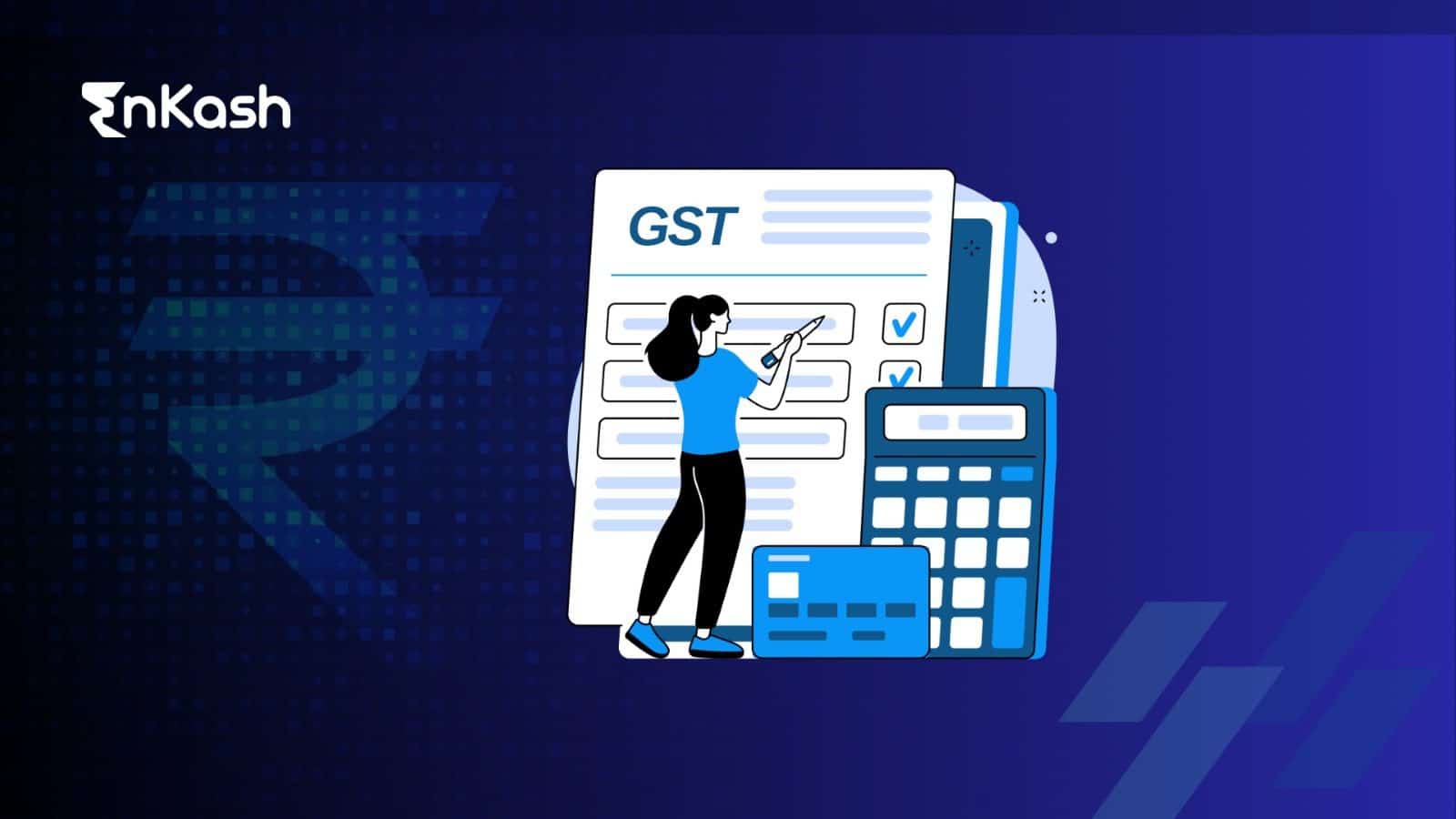The Goods and Services Tax (GST) is an indirect tax system implemented in India on 1st July 2017. It took the place of several indirect taxes that the central and state governments previously imposed. GST is divided into three main components – Central Goods and Services Tax (CGST), State Goods and Services Tax (SGST), and Integrated Goods and Services Tax (IGST). Each component has its unique full form, meaning, and significance in the Indian tax system.
CGST – Full form, meaning, and significance
CGST stands for Central Goods and Services Tax. It is a levy that the central government imposes on the supply of products and services within a state. When goods and services are supplied inside the same state during a transaction, the CGST is applicable. The Central Government is the recipient of the CGST revenue.
CGST plays a crucial role in the GST system as it ensures that the Central Government receives its fair share of tax revenue. It helps in maintaining fiscal discipline and enables the government to fund various developmental activities and welfare programs. CGST is collected by the Central Government and is administered by the Central Board of Indirect Taxes and Customs (CBIC).
SGST – Full form, meaning, and significance
What is SGST? SGST stands for State Goods and Services Tax. It is a tax levied by the State Government on the supply of goods and services within a state. SGST is applicable when the transaction involves the supply of goods and services within the same state. The respective State Government is the recipient of the SGST revenue.
SGST allows the State Government to have control over its tax revenue. It gives the state autonomy to decide its tax rates and use the revenue for various developmental projects and welfare schemes. SGST is collected by the State Government and is administered by the respective State Tax Departments.
IGST – Full form, meaning, and significance
IGST stands for Integrated Goods and Services Tax. It is a tax levied by the Central Government on the supply of goods and services between states or from a Union Territory to a state. IGST is applicable when the transaction involves the supply of goods and services between different states or between a Union Territory and a state. The revenue generated from IGST is divided between the Central and State Governments based on predefined ratios.
IGST plays a crucial role in promoting seamless trade between states and Union Territories. It eliminates the complexities of multiple taxes and ensures that the tax burden is shared between the Central and State Governments. IGST is collected by the Central Government and is administered jointly by the Central and State Tax Departments.
Now that we have understood the CGST, SGST, and IGST meaning, let’s move forward with the differences between them.
Differentiating Between CGST, SGST and IGST
The key difference between CGST, SGST, and IGST lies in their applicability and distribution of revenue. CGST and SGST are applicable when the transaction involves the supply of goods and services within the same state, whereas IGST is applicable when the transaction involves the supply of goods and services between different states or between a Union Territory and a state.
The revenue generated from CGST goes entirely to the Central Government, while the revenue generated from SGST goes entirely to the respective State Government. In the case of IGST, the revenue is divided between the Central and State Governments based on predefined ratios.
CGST Vs SGST Vs IGST
ASPECT |
CGST |
SGST |
IGST |
Full form |
Central Goods and Services Tax |
State Goods and Services Tax |
Integrated Goods and Services Tax |
Levied by |
Central Government |
State Government |
Central Government |
Applicability |
Intra-state transactions (within the same state) |
Intra-state transactions (within the same state) |
Inter-state transactions (between different states or UTs) |
Purpose |
Central tax revenue focused on development and welfare |
To help states receive appropriate tax collections for their internal projects |
To facilitate inter-state trade without the need of multiple tax regimes |
Compliance and documentation |
Not complicated based on the management level as it is centrally managed |
Administered separately by each state, makes it fairly complicated |
Requires detailed reporting for interstate trade |
Revenue settlement |
Settled by the Central Government |
Settled by the respective State Government |
The income generated is settled between the Central and State Governments. |
Why Is There a Split between SGST, CGST, and IGST?
The Goods and Services Tax (GST) within the country has been segmented into three tiers – Central Goods and Services Tax (CGST), State Goods and Services Tax (SGST), and Integrated Goods and Services Tax (IGST) to assist in the improvement of the country’s tax system. This separation was crucial for establishing a more organized and balanced tax structure across India. Here are some key reasons why this split was necessary:
Easier Compliance For The Businesses
With distinct types of GST, specifically for intra-state GST and inter-state GST, it has been made easier for businesses to comply with the tax requirements. SGST and CGST apply to the transactions involving the states (intrastate) while IGST applies to the transactions involving more than one state (interstate). This makes it quite easy for businesses to know which kind of tax applies by the location of the sale or service which greatly helps in managing compliance with less hassle.
Facilitation of Revenue Collection By Central And State Governments
The splitting of GST into CGST, SGST, and IGST helps to ensure that both the Central and State Governments have designated streams of tax revenue. For example, CGST is for the Central Government, SGST is for the State Government, and IGST which is for interstate transactions is shared between the Central Government and the respective State Governments. The states can allocate these resources for the development of the states as well as the country, thus promoting federalism.
Promotion of Interstate Trade and Commerce
Before the implementation of GST, wheeling the goods from one state to another required multiple taxes, all of which increased the cost of goods to the end consumer and business. To eliminate such effects in external transactions, the concept of Integrated Goods and Services Tax (IGST) was introduced. Under this system, a single tax (IGST) is levied on the sale of goods and services to other states and the revenue is then divided in suitable proportions which encourages interstate trade as there are no extra taxes. This has been a great advancement in the direction of establishing a single economic community.
How CGST, SGST, and IGST work together in different scenarios
CGST, SGST, and IGST work together to ensure a seamless tax system across the country. When a transaction involves the supply of goods and services within the same state, both CGST and SGST are levied. The total tax amount is divided equally between CGST and SGST, and the respective governments receive their share of the revenue.
In the case of a transaction involving the supply of goods and services between different states or between a Union Territory and a state, IGST is levied. The tax amount is collected by the Central Government, and the revenue is divided between the Central and State Governments based on predefined ratios.
Examples of CGST, SGST, and IGST calculations
To understand the calculations of CGST and SGST, let’s consider an example. Suppose a business in Maharashtra sells goods worth Rs. 10,000 to a customer in the same state. The tax rate for both CGST and SGST is 9%. In this case, the CGST and SGST calculations would be as follows:
CGST Calculation:
Taxable Amount = Rs. 10,000
CGST Rate = 9%
CGST Amount = (Taxable Amount * CGST Rate) / 100
CGST Amount = (10,000 * 9) / 100
CGST Amount = Rs. 900
SGST Calculation:
Taxable Amount = Rs. 10,000
SGST Rate = 9%
SGST Amount = (Taxable Amount * SGST Rate) / 100
SGST Amount = (10,000 * 9) / 100
SGST Amount = Rs. 900
Therefore, the total intrastate tax amount (CGST + SGST) would be Rs. 1,800.
Now, to understand the calculations of IGST, let’s consider an example. Suppose a business in Maharashtra sells goods worth Rs. 10,000 to a customer in Gujarat. The tax rate for both IGST is 18%. In this case, the IGST calculations would be as follows:
IGST Calculation:
Taxable Amount = Rs. 10,000
IGST Rate = 18%
IGST Amount = (Taxable Amount * IGST Rate) / 100
IGST Amount = (10,000 * 18) / 100
IGST Amount = Rs. 1,800
Therefore, the total interstate tax amount (IGST) would be Rs. 1,800.
How are SGST, CGST, and IGST Collected?
The collection procedure of SGST, CGST, and IGST is planned in such a way that the appropriate government authority gets the revenue depending on the type of transaction that is involved, either in the same state or outside it.
Below is a detailed categorization of these tax collections:
Intrastate Transactions (Within the Same State)
In the case of transactions occurring within one state, SGST, and CGST are imposed. The total tax for such a transaction is divided equally between the two components.
Let’s take an example where the sale is made in the state of Maharashtra. Both CGST and SGST will be charged on this transaction. Let’s assume that the applicable rate of GST is 18%. This 18% will be on 9% CGST and another 9% on SGST.
Collection Process: Businesses charge both CGST and SGST during the sale of goods or services and services rendered. Then such businesses remit the CGST to the Central Government’s bank account while the SGST to the relevant State Government’s bank account. This way, both governments are compensated for sales made within their territories.
Interstate Transactions (Between Different States or Union Territories)
In cases of sales or services rendered beyond the geographical confines of a state or between Union Territories, CGST and SGST are not levied; instead, IGST is charged.
Hence, there is no cross-taxation on the same transactions and the ease of doing business is enhanced as there is no necessity to pay taxes multiple times in such instances.
Collection Process: The Central Government will collect the Integrated Goods and Services Tax at the time of sale, and that will be transmitted to the State Government at the destination of the supplies of goods or services made.
This approach helps in rectifying the share of tax till the state of consumption avoiding the imposition of tax on tax. The states do not lose any part of the importing goods and services taxation.
Importance of understanding CGST, SGST, and IGST for businesses
Understanding CGST, SGST, and IGST is crucial for businesses operating in India, as compliance with GST regulations is essential to avoid penalties and legal complications. By understanding the full form, meaning, and significance of CGST, SGST, and IGST, businesses can ensure accurate tax calculations, maintain proper records, and file their returns on time.
Additionally, understanding the interplay between CGST, SGST, and IGST helps businesses determine the correct tax liability based on the nature of their transactions. This enables them to make informed decisions about pricing, supply chain management, and expansion strategies. Overall, a clear understanding of CGST, SGST, and IGST is essential for businesses to navigate the complexities of the Indian tax system effectively.
Common misconceptions about CGST, SGST, and IGST
Several common misconceptions about CGST, SGST, and IGST need to be addressed. One common misconception is that these taxes are additional charges imposed on top of pre-existing taxes. In reality, CGST, SGST, and IGST have replaced multiple indirect taxes, simplifying the tax structure and reducing the tax burden on businesses.
Another misconception is that IGST is a tax levied only on imports. While IGST is applicable to imports, it also applies to the supply of goods and services between different states or between a Union Territory and a state. It ensures that the tax liability is shared between the Central and State Governments, promoting equal distribution of revenue.
Conclusion
The implementation of the Goods and Services Tax (GST) in India revolutionized the country’s indirect tax system by introducing CGST, SGST, and IGST. These components play distinct roles in taxing transactions within states and between states, ensuring a seamless tax system. CGST and SGST cater to intrastate transactions, with revenue directed to the Central and State Governments, respectively. IGST, on the other hand, facilitates interstate transactions, with revenue shared based on predefined ratios. The detailed explanations, practical examples, and clarification of misconceptions provided in this article underscore the importance of businesses understanding these components for proper compliance, accurate tax calculations, and effective decision-making within the dynamic landscape of India’s tax framework.
FAQs
What is GST, and when was it implemented in India?
GST is an indirect tax system implemented in India on July 1, 2017, replacing multiple indirect taxes.
What are the main components of GST?
GST comprises CGST (Central Goods and Services Tax), SGST (State Goods and Services Tax), and IGST (Integrated Goods and Services Tax).
How does CGST contribute to the Indian tax system?
CGST is levied by the Central Government on intrastate transactions, ensuring fair revenue distribution for developmental activities.
What role does SGST play in state taxation?
SGST, imposed by State Governments on intrastate transactions, empowers states to control tax revenue for local developmental projects and welfare schemes.
Explain the significance of IGST in interstate transactions.
IGST, a tax by the Central Government, facilitates seamless interstate trade, eliminating complexities and sharing tax burdens between Central and State Governments.
What are the key differences between CGST, SGST, and IGST?
CGST and SGST apply to intrastate transactions, while IGST is for interstate transactions. The revenue distribution also differs.
Why is understanding CGST, SGST, and IGST crucial for businesses?
Understanding ensures GST compliance, accurate tax calculations, and informed decision-making on pricing, supply chain, and expansion strategies.
What are common misconceptions about CGST, SGST, and IGST?
Misconceptions include viewing these taxes as additional charges and thinking IGST applies only to imports, whereas it also covers interstate transactions.
What is the significance of GST in simplifying India’s tax structure?
GST replaces multiple indirect taxes, reducing the tax burden on businesses and creating a streamlined tax system.
How does IGST contribute to promoting equal revenue distribution?
IGST ensures equal distribution of tax liability between the Central and State Governments for interstate transactions.
What is the role of the Central Board of Indirect Taxes and Customs (CBIC) in CGST administration?
CBIC administers CGST, ensuring effective collection and management of taxes for the Central Government.
What is the overall impact of GST on India’s indirect tax system?
GST revolutionizes India’s indirect tax system, introducing efficiency through CGST, SGST, and IGST, benefitting businesses and ensuring a seamless tax framework.














